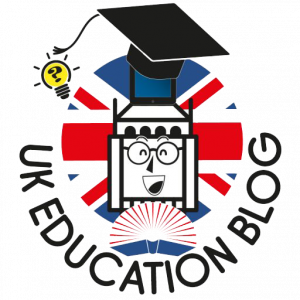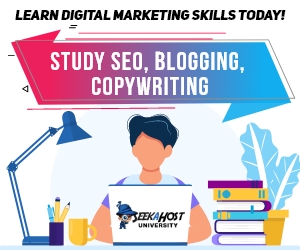Nonprofits play a vital role in driving social change, but they often face unique challenges in managing resources, staff, and volunteers effectively. One area where technology can make a significant impact is in learning and development.
By integrating a Learning Management System (LMS) with Customer Relationship Management (CRM) systems, nonprofits can streamline their training efforts, optimize staff development, and ensure their teams are well-equipped to fulfil their mission.
In this article, we’ll explore how nonprofits can benefit from a customised LMS integrated with CRM systems and highlight key features to consider for effective training and staff development.
The Importance of Training and Staff Development for Nonprofits

Training and staff development are crucial for nonprofits because their teams, often comprised of volunteers, need ongoing guidance and skill-building to perform their roles efficiently. Nonprofits typically operate with limited resources, so effective training ensures that every staff member and volunteer can contribute to the organisation’s mission effectively.
However, managing large teams across different departments and locations can make training a complex task. This is where integrating a customised LMS with a CRM system can transform how nonprofits approach education and development.
6 Benefits of Integrating an LMS with CRM for Nonprofits

1. Personalized Learning Experiences
When the LMS for nonprofits is integrated with its CRM, it enables tailored learning experiences based on each user’s role, performance, and history within the organization. This ensures that training is relevant and customized, improving engagement and learning outcomes.
For instance, volunteers working in fundraising can receive targeted training on donor engagement strategies, while administrative staff can focus on skills related to grant writing or financial management. The CRM tracks user data and tailors training pathways in the LMS accordingly.
2. Streamlined Onboarding Process
Onboarding new staff and volunteers can be time-consuming, especially for nonprofits that frequently welcome new team members. By combining an LMS with CRM, onboarding can be automated and more efficient. New members are enrolled in training courses automatically based on their CRM profile and job function, ensuring that they receive the necessary information and skills to begin contributing immediately.
3. Centralized Data Management
The integration of LMS and CRM creates a single repository for all staff and volunteer data. This makes it easy for nonprofit administrators to monitor progress, track learning milestones, and evaluate the impact of training efforts across the organisation. Administrators can also use this data to improve and adjust training programs based on individual or team performance.
4. Enhanced Collaboration and Engagement
Nonprofit organisations often rely on volunteers and staff who work remotely or across different locations. Integrating an LMS with a CRM helps connect these dispersed teams by providing centralised access to training materials and collaboration tools. Learners can interact, share knowledge, and ask questions in forums, ensuring ongoing communication and engagement.
5. Improved Reporting and Analytics
With both CRM and LMS data in one system, nonprofits can access detailed reporting on training performance and its correlation with overall organisational success. This data can reveal trends, such as whether staff trained in specific programs are better equipped to engage donors or manage projects. Nonprofits can then refine their training strategies to focus on the areas that produce the greatest impact.
6. Scalability for Future Growth
As nonprofits grow, the ability to scale their training programs becomes essential. A customised LMS, when integrated with CRM, allows nonprofits to quickly onboard and train new staff and volunteers without having to revamp their entire system. Training programs can be expanded to accommodate new departments or initiatives, ensuring that everyone remains aligned with the organization’s mission.
6 Key Features of a Customized LMS for Nonprofits

A nonprofit-specific LMS should offer a range of features designed to meet the unique needs of nonprofit teams. Here are a few features to look for when selecting a customised LMS for your organisation:
1. Role-Based Access
A role-based system enables nonprofits to deliver specific training content based on an individual’s role within the organization. Volunteers, staff, and management can all have different training modules suited to their job functions.
2. Automated Enrolments and Notifications
Integrating an LMS with a CRM means staff and volunteers can automatically be enrolled in courses upon joining the organisation. Automated notifications remind learners to complete training, ensuring that important learning milestones are met without constant manual follow-up.
3. Mobile Accessibility
Given that many nonprofit staff and volunteers work in the field or remotely, mobile-friendly access to the LMS is essential. A customised LMS should allow users to access training materials and courses from their smartphones or tablets.
4. Social Learning Tools
Encouraging collaboration and knowledge sharing can significantly boost learning outcomes. Features such as discussion forums, peer feedback, and live webinars foster an interactive learning environment, even for dispersed teams.
5. Integration with Existing Tools
A nonprofit’s LMS should integrate seamlessly with existing tools like email marketing platforms, donor management systems, and project management software. This enhances workflow efficiency and ensures that training data feeds directly into the nonprofit’s overall operational strategies.
6. Comprehensive Reporting and Tracking
Nonprofits need to track the progress and effectiveness of their training programs. An LMS that offers comprehensive reporting, and analytics can help managers understand which courses most effective, which staff are need additional support, and how training aligns with broader organisational goals.
Why Integrating LMS and CRM Systems is a Game-Changer for Nonprofits
For nonprofits aiming to maximise their impact, integrating an LMS with a CRM system is an investment that pays dividends. It enhances the ability to provide personalised training, simplifies the onboarding process, centralises data, and supports remote teams—all while improving the overall effectiveness of staff and volunteer development. With the right customised LMS, nonprofits can streamline their training efforts, ensure continuous learning, and scale their operations for future growth.
Author Profile

- Shirley Owen is a blogger and writer who enjoys writing blogs on education, technology and general news. An avid reader, she follows all the latest news & developments to report on them through her articles.
Latest entries
 careerDecember 30, 2025Why BIM Mastery has become essential for Construction Professionals in 2025
careerDecember 30, 2025Why BIM Mastery has become essential for Construction Professionals in 2025 learningDecember 22, 2025When Co-parenting Affects School Performance – Challenges & Solutions
learningDecember 22, 2025When Co-parenting Affects School Performance – Challenges & Solutions educationDecember 11, 2025Making Education Accessible for Mobile Families that Travel
educationDecember 11, 2025Making Education Accessible for Mobile Families that Travel learningOctober 28, 20257 Daily Classroom Strategies Helping Children With Learning Differences Thrive
learningOctober 28, 20257 Daily Classroom Strategies Helping Children With Learning Differences Thrive







